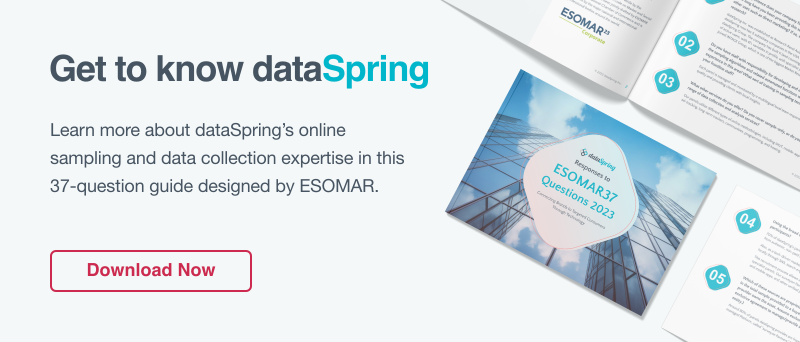
Help ensure the success of your Asian market research study by learning how to avoid common traps that can affect data quality and study timing.
As more global companies seek to enter or expand business in Asian markets, market research is often the logical first step. And as the Asian research market continues to grow, particularly in China and Southeast Asia, a strong body of best practices has been developed. Like every other industry today, change comes rapidly, and so too the Asian survey market is always evolving.

Elaine Detosil (pictured), Senior Manager of APAC was interviewed by dataSpring editors recently and shares her perspective on some common survey misconceptions about running market research surveys in Asia and shares tips on how to run a high-quality study in the region.
Misconception #1: If a methodology works, stick with it.
Clients often fall into the trap of using one method for all their research studies because it has proven to provide a good result or because of price. While consistency is important, it is just as important to use different approaches depending on the study objectives, region or sample criteria. Some targets, particularly more niche audiences, are potentially less suited to an online methodology and so do not offer any cost efficiency. It is important to work with your sample supplier to determine the right methodology for your target.
Misconception #2: Nationally represented samples are easily attainable online.
While in many countries the online population closely mirrors national characteristics, in general, the Asian online population skews younger with higher income and education levels. In this case, assigning hard quotas is not practical, so when appropriate, we recommend soft quotas to ease up the data collection process.
Misconception #3: Screener questions apply across regions.
There are actually three issues here.
First is providing generic specifications for multi-country studies. We still receive specs for things like income and education that are based on European or US standards, which are often not appropriate in Asian markets. In these cases, we always confirm whether the client needs a direct conversion or is looking for a local market equivalent.
Second is the localization of sample criteria and quotas. We have received target requests that are simply not in sync with the market. For a recent online study, we were asked to find non-Facebook users, which was not practical due to the nature of the online sample population available. Another example is targeting meat-eating consumers in Muslim countries. It is imperative that researchers take into account the regional and cultural differences of the population when developing analysis and sample plans.
The third is screening on product usage and ownership. Asia has some peculiarities when it comes to screening on things like product ownership and purchase behavior. As we pointed out in our dataSpring blog, 3 Ways to Combat Social Desirability Bias in Asia, some self-reported data can be unreliable and lead to misleading conclusions. We work closely with our clients to help identify screener questions that may cause issues and help craft approaches that help eliminate bias.
Misconception #4: A good offline questionnaire works online.
This is a constant challenge as clients want comparability to past projects as they transition from offline to online methods. Offline questionnaires tend to be long (over 30 minutes) and almost always include lots of matrix and open-ended questions. Programming these questionnaires 'as is' causes high respondent dropout and bogs down field time. It is vital to rethink questionnaire design when moving to online and mobile data collection. In most cases, we can help adapt an appropriate online study that will have only minimal impact on prior study comparability.

Misconception #5: Global surveys work anywhere.
With the addition of images and videos in online and mobile surveys, it is important to understand the cultural and political sensitivities of a market. For instance, YouTube is not accessible in China, so embedding a video in a survey there could pose potential issues during fieldwork. In majority of Muslim countries like Indonesia and Malaysia, including questions about taboo topics like alcohol consumption can be considered highly insensitive.
Misconception #6: Consistent field times.
There are lots of public holidays celebrated all year long and they vary greatly per market, as well. In Asia, people normally go to the provinces either for a personal vacation or to meet relatives to celebrate long holidays. This is reflected in the participation rate of studies conducted at these times. It is important to consider these factors in planning, especially if there are critical deadlines that must be met, as holidays can affect the availability of data.

Final thoughts
Overall, not just in Asia, but running surveys in general, the key thing is to always localize the survey to fit the target market. This is critical to study success and is something we at dataSpring consistently stress to our client partners.


 Download Panel Book
Download Panel Book


